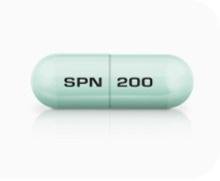Qelbree Disease Interactions
There are 4 disease interactions with Qelbree (viloxazine).
Viloxazine (applies to Qelbree) depression
Major Potential Hazard, Moderate plausibility.
Patients being treated with viloxazine should be monitored for clinical worsening and emergence of suicidal thoughts and behaviors. In clinical trials, higher rates of suicidal thoughts and behavior were reported in patients with attention deficit hyperactivity disorder (ADHD) receiving this drug than placebo. Prior to initiating treatment, patients should be screened for a personal or family history of suicide, bipolar disorder, and depression.
Antidepressants (applies to Qelbree) mania
Moderate Potential Hazard, Moderate plausibility. Applicable conditions: Bipolar Disorder
All antidepressants may occasionally cause mania or hypomania, particularly in patients with bipolar disorder. Therapy with antidepressants should be administered cautiously in patients with a history of mania/hypomania.
Viloxazine (applies to Qelbree) liver impairment
Moderate Potential Hazard, Moderate plausibility. Applicable conditions: Liver Disease
The effect of hepatic impairment on the pharmacokinetics of viloxazine is unknown.
Viloxazine (applies to Qelbree) renal impairment
Moderate Potential Hazard, Moderate plausibility. Applicable conditions: Renal Dysfunction
The exposure of viloxazine increases in patients with renal impairment. Dose reduction is recommended in patients with severe renal impairment (estimated glomerular filtration rate less than 30 mL/min/1.73 m3).
Switch to professional interaction data
Qelbree drug interactions
There are 286 drug interactions with Qelbree (viloxazine).
Qelbree alcohol/food interactions
There is 1 alcohol/food interaction with Qelbree (viloxazine).
More about Qelbree (viloxazine)
- Qelbree consumer information
- Check interactions
- Compare alternatives
- Pricing & coupons
- Reviews (48)
- Drug images
- Side effects
- Dosage information
- During pregnancy
- FDA approval history
- Drug class: adrenergic uptake inhibitors for ADHD
- Breastfeeding
- En español
Related treatment guides
Drug Interaction Classification
| Highly clinically significant. Avoid combinations; the risk of the interaction outweighs the benefit. | |
| Moderately clinically significant. Usually avoid combinations; use it only under special circumstances. | |
| Minimally clinically significant. Minimize risk; assess risk and consider an alternative drug, take steps to circumvent the interaction risk and/or institute a monitoring plan. | |
| No interaction information available. |
See also:
Further information
Always consult your healthcare provider to ensure the information displayed on this page applies to your personal circumstances.


